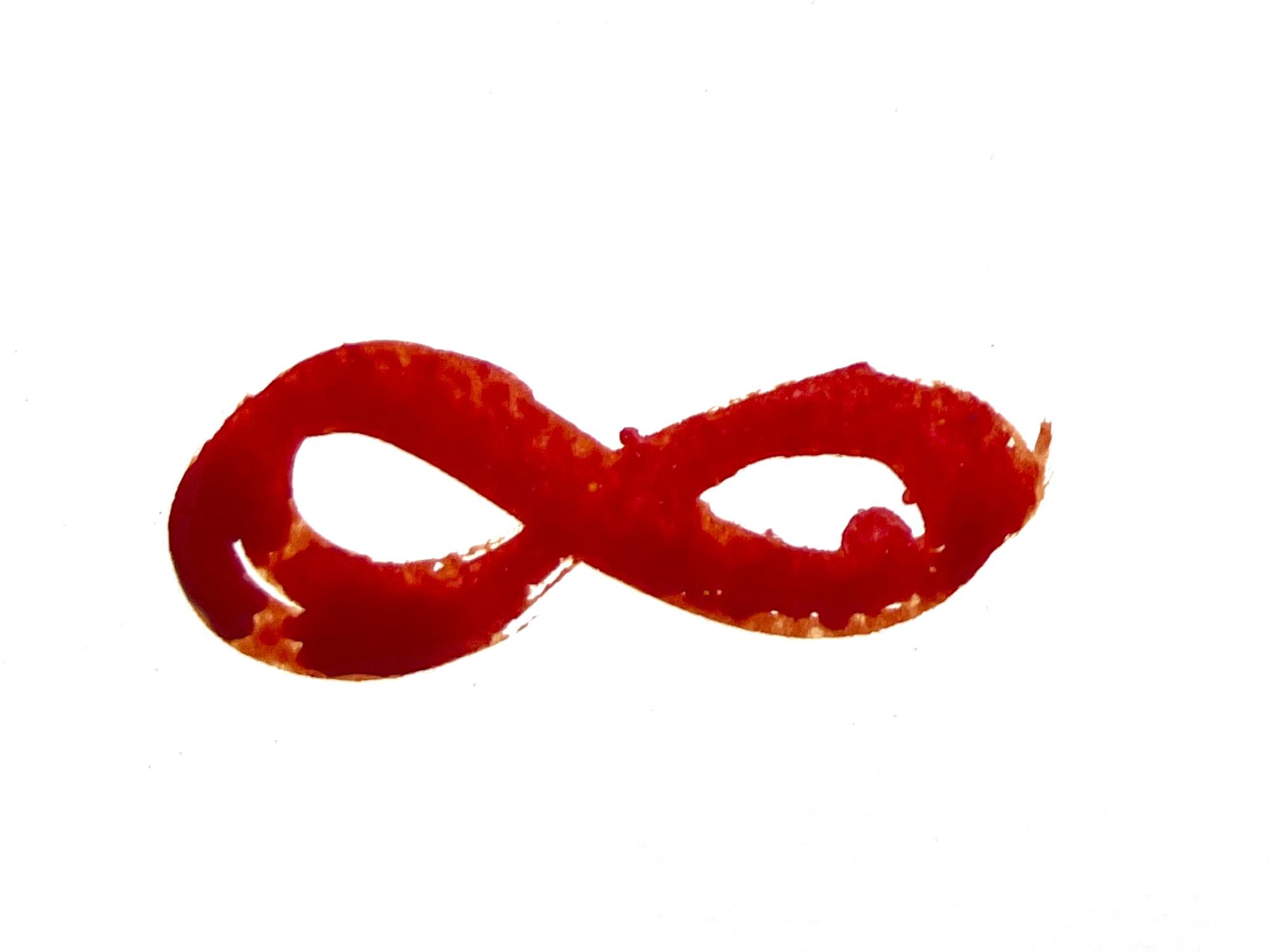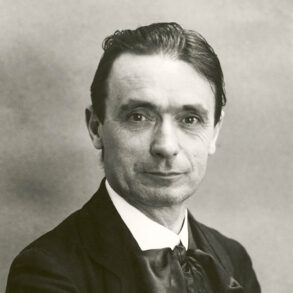The long-established mechanistic dogma that the heart is a pressure-propulsion pump that impels the blood, an inert fluid, is beginning to lose ground in mainstream medicine.
In a recent article1 published by an acclaimed peer-reviewed physiology journal, we presented evidence that the movement of the blood is primary, and the heart “senses” and directs its distribution to the organs and thus plays only a secondary role. As pointed out by Rudolf Steiner, the blood can be seen as “materialized” warmth, a physical expression of the will whose very nature is activity, i.e., movement. This has been confirmed by observations on embryonic circulation, where the blood circulates before the functional integrity of the heart is achieved. Not only does the blood, a liquid organ,2 move autonomously in response to the metabolic demands of the tissues, but it also possesses greater vitality than any other organ. For example, banked blood can be transfused for up to 6 weeks, as compared to a kidney or the heart, which need to be implanted into a recipient within 48 and 5 hours, respectively, after procurement. In as much as the blood in warm-blooded animals is an expression of the group-soul of a given species, human blood circulating in the vertical direction is the expression of an individualized human spirit. We can say that the very nature of blood within an organism is movement, and if, for any reason, its mobility is limited, it becomes prone to clotting.
Nature’s water cycle is an apt image of “autonomous” circulation. Water rises as vapor, condenses into drops, and rains to the ground. The transition of water between aggregate states, i.e., vapor and liquid is caused by taking up and releasing of warmth. This is a fundamental process that plays a key role in the maintenance and renewal of the earth’s life body, also known as the biosphere. Similarly, the sum of human body water (blood, lymph, interstitial, and intracellular fluid) is subject to incessant movements effected by metabolic warmth. Collectively, the total amount of water in the human body, estimated to be about 75% of the body weight, is the carrier of the formative forces also known as the “life body” or “etheric body.”3 Blood, consisting of protein-rich plasma and red blood cells (RBCs), is a further transformation of the etheric body and the bearer of the human self or the “I”.4 With 4-6 millions of RBCs per cubic millimeter, the RBCs outnumber all other types of cells in the body! RBCs are filled with hemoglobin, an iron containing pigment which binds oxygen in the lung and delivers it by way of the arterial blood to the tissues for the support of cellular respiration. The venous blood, on the other hand, transports carbon dioxide, a toxic byproduct of tissue metabolism, to be exhaled by the lung. Not unlike water in outer nature, the blood alternates between the life-filled, oxygen-laden “light” condition striving towards the periphery, and the carbon dioxide-laden “heavy” state seeking the center.
Conventional physiology, lacking the concept of a life or etheric body, ascribes the circulation of the blood solely to the pumping action of the heart. The movement of tissue fluids, by contrast, is attributed to changes in temperature and concentration of solutes. However, no cogent explanation exists for the circulation of bile and the movement of lymph, cerebrospinal fluid, and numerous other substances. The origin of this blind spot in physiology is rooted in physics and can be traced to Galileo, Newton, Descartes, and their followers, who, with the advent of an intellectual conception of the world, lost the feeling for the cosmic dimensions of earthly phenomena. They reduced the four-element Aristotelian physics,5 of which the ethers were still an integral part, to three states of matter – solid, liquid, and gas. Warmth, the fourth state that permeates and transforms them all and forms the bridge between the physical and the etheric, was simply ascribed to hypothetical atomic motion. Atomistic thinking, the bedrock of the materialistic world conception, originated with Greek philosophers, most notably Democritus and Epicurus. It resurfaced with the advent of the consciousness soul age in the 15th century and continues to this day. (Of note, in an effort to expose this trend in science, Rudolf Steiner wrote his first scientific essay6 on the refutation of atomism, at the age of 21!) The inevitable result of this reductionist approach to nature was that only what can be “measured and weighed,” i.e., the “centric” forces, such as gravity, pressure, electricity, magnetism, etc., were accepted by physics and physiology, whereas the activities, that is, their etheric counterparts, remained unrecognized.
All kingdoms of nature, including humans, are subject to centric forces as well as to forces of the periphery, namely, to warmth, light, chemical or tone, and life ethers. The ethers reach us through the skin, the senses, and our breath. In the process, they activate our own individualized life or etheric forces. Spiritual scientific research shows that the sum of etheric forces in our organism manifests as negative pressure or suction.7 The existence of negative pressure in the chest (which prevents the collapse of the lungs), at the center of blood vortices in the heart, and in tissue spaces throughout the body is well-recognized in physiology. However, the fact that collectively this constitutes a “force-field” is not acknowledged. The existence of this field has now been proposed as the actual cause of blood’s movement from the periphery to the heart. Its primary field of action is the smallest vessels, the capillaries. Thus, as in any circular motion, two opposing sets of forces are connected with blood’s movement, namely, the centrifugal and centripetal. The former is active in the arterial pressure maintained by the left ventricle, and the latter manifests as suction.
Physiology of Freedom
The assertion that the blood circulates is not quite accurate. Rather, the blood moves in lemniscates and, as such, is a reflection of the planetary movements as described by Steiner in the Astronomy Course.8 The heart is placed at the crossing point between the greater (systemic) and the lesser (lung) circulations and, like the sun, can be seen as a dynamic pivot point ceaselessly balancing the two. In that sense, the heart and the vital organs above and below the heart represent the inner solar system.9
The statement that “the heart is not a pump” is similarly incorrect because a hydraulic ram, by which the physical principle of the heart’s action can be demonstrated, is a type of pump driven by the momentum of flowing water. The heart is therefore “activated” by the blood, and its rhythmic movement is the expression of the macrocosmic soul/spirit forces that reach it by way of the senses and of the “earthly” forces streaming to it from the movement-metabolic system.
It is known that the heart expends only about 15-20% of its energetic demands on contraction and expansion, with the balance (some 80%!) converted into warmth. To date, no rational explanation has been advanced as to why the heart should generate so much heat. It has even been suggested that the heart simply is an “inefficient pump.” For comparison, the efficiency10 of an internal combustion engine is about 30-35%, significantly higher than that of the heart. The answer to this physiological riddle can only be given by occult physiology, namely, that the warmth of the heart serves as a bridge11 between the soul-spiritual and the etheric-physical constitution of the human being. It is the gateway by which sense impressions from the outer and inner world, memories, judgments, and karmic impulses are joined with our I, made “our own.”
At long last, the heart has been freed of a task it does not perform, burdened upon it by mechanistic thinking, and which, at any rate, is physically impossible. How could an organ the size of a fist push blood, a relatively viscous fluid (2-3 times greater than water), through an estimated 50,000 km of blood vessels, mostly consisting of capillaries (1011), many with diameters that are smaller than the red blood cells! It may still take some time before physiologists discover that, in addition to the numerous functions the heart is known to perform, it is the organ of the soul and the agent of destiny. But, at the very least, the door has been opened towards a future, more human physiology.
Photo Sofia Lismont
Footnotes
- Furst B., José González-Alonso, “The heart, a secondary organ in the control of blood circulation”; open access.
- Furst, B., “The heart and circulation, an integrative model”, Springer, 202.
- A simple proof that fluids possess “etheric forces” is the phenomenon of buoyancy. The upthrust of an immersed object is equal to the weight of displaced liquid (Archimedes’ principle).
- Steiner, R., Lecture of Oct. 25, 1906; CW 55.
- Aristotle maintained that circular movement is a primary type of motion in the cosmos and in living nature. It is continuous and is caused by the “prime mover” in the former, and by “entelechy” in the self-moving organisms and mediated by “inner warmth” (Physics, Books 7 and 8).
- Steiner, R. Letter to Friedrich Theodor Vischer, “The only possible criticism of atomistic concepts” (1882, GA 46).
- See, for example, Lecture of April 24, 1920, CW 201.
- Lecture of January 17, 1921; CW 323.
- Lecture of March 23, 1911; CW 128.
- The term “efficiency” refers to the fraction of consumed energy that can be converted into physical work.
- Lectures of December 17-20, 1920, CW 202.










Interesting I have long talked about this subject but you have added some more food for thought I thank you for your insights. What are you thoughts on the 4th phase of water as G Pollack has written about. I also find it interesting that our structured water has a charge the same as our Earth. I also like Frank Chesterfields work on the heart and the vortex motion the heart produces. I find it strangely peaceful that the heart is so much more than a pump a rhythmic antenna for our human body 🤗
A truly heartwarming presentation. Furst combines spiritual scientific research with ordinary materialistic measurements and investigation in general. Or, one might say, he does not combine the two forms but, rather, recognizes that any separation of the two forms is false in the first place. What an excellent example it is of the kind of research humanity is required to do now and in the future, and its tactful presentation provides meditative substance for the layman as well as the scientist. Its validity speaks for itself. The heart warms to it — resonates.
Furst underlines the necessity of applying esoteric physiology to solve the riddle of why the heart should generate so much heat. The answer lies in heart-generated warmth serving as a bridge between the soul-spiritual and the etheric-physical human constitution. One might conjecture that true research focused on the heart may, by virtue of its focus on the heart, serve as a bridge from a materialistically limited scientific viewpoint to one that acknowledges the spiritual beings and forces at work in all matter that our senses perceive. They wait to be discovered by human beings in whom thinking is permeated by the consciousness soul.
I have followed Prof Furst’s fascinating insights for some time. I am sure that ‘Heart Thinking’ is very important.
However, on the ‘not a pump’ description of the heart I wonder what Rebecca Henderson carried in her rucksack for a year after her cancerous heart was removed. She died in 2019 from complications with a subsequent Heart Transplant.
For that year without a heart did she continue to be a Human Being? And precisely what function did her artificial heart perform?
https://www.theguardian.com/uk-news/2019/mar/01/rebecca-henderson-student-carried-heart-in-backpack-dies-from-transplant-complications